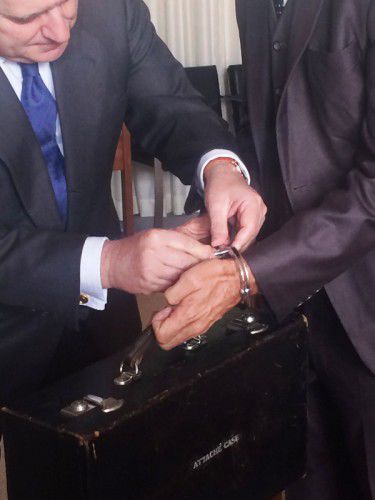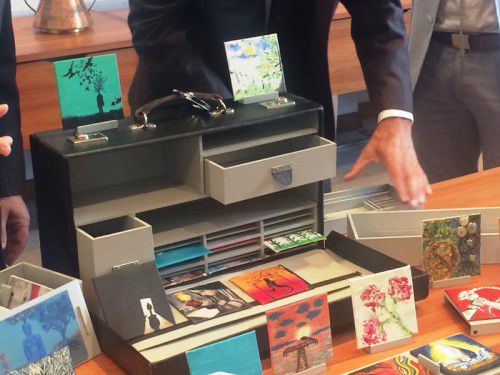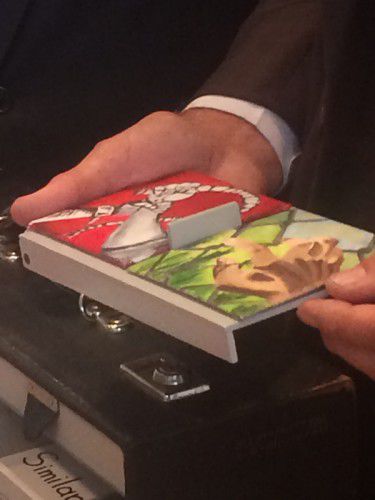HANDCUFFED to a 1940s attaché case handed down from his cousin’s uncle, Melbourne artist Peter Burke made what surely must be the most unusual visual arts appearance of the week when he turned up at the Embassy of Spain this morning to present his credentials.
You’ve guessed it, his ‘performance’ was part of an art project, “Low Cost Diplomatic Bag”.
Luckily for him, the Ambassador of Spain in Australia, Enrique Viguera, was on hand to uncuff the artist, in emulation of the now-outmoded handover procedure involving the attaché case or ‘diplomatic pouch’.
Burke, it turns out, is no stranger to unorthodox art practice, having achieved a certain notoriety by turning up at two large Indian art fairs with artworks – all for sale – sewn into his jacket lining-cum-display case.
On this occasion, he was an invited participant in an international art project curated by Nilo Casares as part of the Spanish Ministry of Foreign Affairs’ effort to maintain a solid artistic profile in the face of drastic budget cuts to their culture program – around €30,000, Ambassador Viguera estimated.
Burke is one of 16 international artists invited by Casares and the Spanish Agency for International Development Cooperation’s cultural program ART-EX to submit work in attaché cases, and was selected, according to the Spanish embassy’s cultural advisor César Espada, because of his experience in working with portable art.
Alas, cost-cutting measures mean that only the bags—not the artists – will travel to Madrid and to the participating countries (including Australia) where “Low Cost Diplomatic Bag” will be seen.
Once freed from his handcuff this morning, Burke opened his attaché case to reveal an extraordinarily well-curated exhibition of 30 artworks by 24 selected Melbourne artists, all of whom are either refugees or have a close connection to the refugee experience.
Not all the artists, Burke explained, were professionals, although he drew attention to some very fine art by a Vietnamese and a Colombian artist, but all bore on the question of refugees, whose voices, he said, were “not always heard.”
Although he had no idea what was inside the bag, the Ambassador declared his approval, describing it as “art meant to raise conscience,” and adding, “I think I like it… we have a similar problem in Spain”.
Having handed over the case, Burke probably won’t see the artworks again until they return to Melbourne as part of the worldwide exhibition program.
The collective exhibition “Low Cost Diplomatic Bag” will travel to Melbourne during the last months of 2015.
The post Art in attaché case – will travel appeared first on Canberra CityNews.


